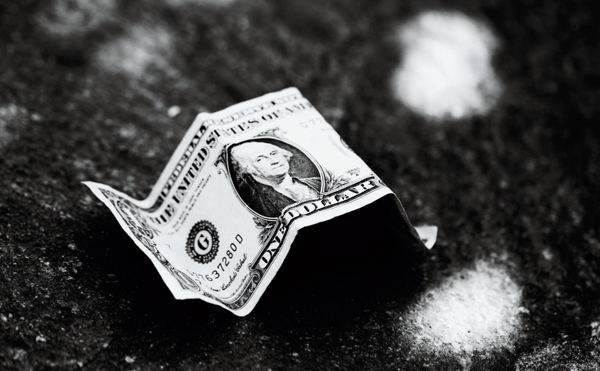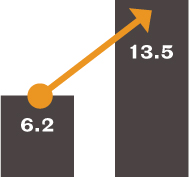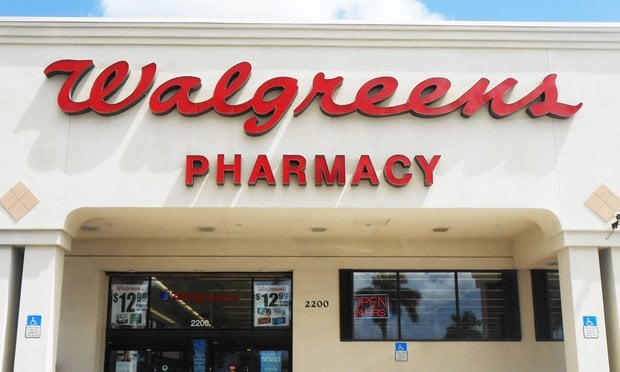Dean Austin, CEO of Austin Benefits Group in Bloomfield Hills, Michigan, is noticing a change in how people treat their health savings accounts.
“I see them paying more attention to HSAs as part of their overall financial strategy,” Austin says. “If people have the financial means—a group with incomes of $80,000 a year and more—we are certainly seeing that they are putting in the maximum contributions and taking the tax benefits.”
That's a change from years past, when consumers contributed about the same amount that they spent in any given year. It's a possible reflection of consumers' growing awareness that they will incur substantial medical costs as they age. In 20 years of retirement, from ages 65 to 85, the average couple will spend about $491,000 out-of-pocket on health care, says Peter Stahl, president of Bedrock Business Results near Philadelphia and an expert on health care challenges during retirement.
Stahl notes that this figure doesn't include time in a nursing home, assisted-living facility or other custodial care. The couple will spend that sum on Medicare premiums, prescription plan premiums, co-pays, home modifications, hearing aids, glasses and sundry other bills.

To fund an expense that can easily balloon above half a million dollars, tax-sheltered medical savings make sense, and they are within reach for affluent consumers in their middle years. In 2015, HSAs will have annual contribution limits of $3,350 for singles and $6,650 for couples, plus a $1,000 additional catch-up contribution allowed each year for those over age 55. (As before, contributions are made in pre-tax dollars.)
At current contribution limits and an annual return of 4 percent, a couple could begin investing at age 45 and save nearly half their likely out-of-pocket retirement medical expenses by the time they turn 65. Likely increases to annual contribution limits, as well as the $1,000 annual catch-up contribution after age 55, could help them save even more.
The account's earnings are tax free, as long as they are used to pay for items on a long and generous list of medical expenses that include everything from hearing aids to health-related travel. Unlike funds in a flexible spending account, money in an HSA rolls over from one year to the next and so has time to compound and offer returns on investment.

In the past, Stahl says, “most people have thought of HSAs as a way to get a tax deduction and fund items that insurance doesn't cover.” By putting more money in than they spend in a year, or by tapping other funds for out-of-pocket costs, consumers can invest HSA money now and have more—sometimes much more—to spend later.
“If you can fund your medical expenses out of pocket while you are still working, you can reach retirement with a pot of gold socked away in an HSA,” Stahl says.
Interest growing

In order to contribute to an HSA, a person must also have a qualifying, high-deductible health care plan. (People who start HSAs when they have qualifying, high-deductible health care plans, but then change to a plan with a lower deductible, can still spend the money in their HSA accounts, but cannot make further contributions unless and until they again have qualifying plans.)
That population is growing. According to the industry organization America's Health Insurance Plans, based in Washington, D.C., the number of people covered by an HSA-eligible, high-deductible health care plan more than doubled between January 2008 and January 2012, rising from 6.2 million to 13.5 million. By January 2014, the organization reported, 17.4 million people were eligible for HSAs.
“HSA popularity is increasing with the rise of high-deductible health plans,” says Jim Lynch, the chief sales officer at WageWorks, a company based in San Mateo, California, that provides consumer-directed health care benefits. A small percentage of people, he says, “are bringing their HSAs into their long-term financial plans. They tend to be the people who started early and contributed a lot.”
In the next five to 10 years, Lynch says, he expects to see more consumers pay more attention to—and invest more money in—HSAs. “This is like the early days of the 401(k),” he says.
More industry interest
“This is a very interesting time,” agrees Steve Auerbach, CEO of Alegeus Technologies, a benefits administration company based in Waltham, Massachusetts.
“Many people see the HSA as part of a health care plan, and then there are other entrants who see it as an incremental savings plan.”
The latter group increasingly includes banks and other financial services companies, Auerbach says, who see an opportunity to manage the long-term money that consumers will invest in HSAs.
“We think that more and more investment firms will offer HSAs, or match themselves to a vendor who can get them those accounts,” says John DiVito, cofounder and president of Flexible Benefit Service Corporation in Rosemont, Illinois, another HSA administrator. “Smaller banks have gotten out, and bigger banks are getting in.”
Along the way, DiVito predicts, “HSAs will become a form of retirement savings. If the cost of health care continues to rise, and it will, medical expenses will only become larger and larger. More and more people will put money away and invest those funds in the mutual funds market.”
Support, education
Because a majority of Americans still get their health care coverage at work, a trend toward longer-term HSA savings may mean greater acceptance of and even enthusiasm around high-deductible policies.
If the combination of such policies and HSAs is to gain traction, however, consumers will need help to understand and maximize the benefits of their HSAs—and financial planners, banks and other financial services companies aren't in the best position to be the sole providers of that information. Brokers, carriers and HSA administrators still have strong roles to play.
“It's a two-part product: You can't have an HSA without a qualifying health care policy, and the person who sells them the policy is still the person who is going to tell them how they can use it,” says DiVito, who envisions brokers and bankers working cooperatively toward client education and support.
“The bigger questions come at the beginning: What is an HSA, how does it work, and where can you get one? The end user doesn't look to the carriers for wellness programs—they think they can take care of themselves. But they do look for help with the finances of health care.”
An investment adviser, on the other hand, might talk about how much money to set aside for health care expenses, discuss what those expenses should be, and help decide where the money should be invested.
“Multiple entities are looking to promote and support HSAs for consumers, which we see as a chance for consumers to have choices and to get advice from more than just their employer,” Auerbach says. “A bank or financial planner can make an HSA part of a full financial strategy. But they often fall down on helping people get best value from their health care plan-HSA combination. At the end of the day, we think the customer needs help to understand the account and also to optimize health care spending.”
“Employers see a one-time enrollment, but consumers want ongoing support and education,” Auerbach adds.
At present, he says, “only 50 percent of consumers understand a flexible spending account, and only 30 percent understand HSAs. We see a tremendous gap in the marketplace for helping employers understand how to explain the benefit, and also get down to the consumer level. How do you help employees understand the triple tax advantage? An HSA is tax-free on the way in, as it compounds, and on the way out. In some instances—when there is no match, for instance—it can be more advantageous than a 401(k).”
Greater interest from banks and other financial providers may also bring increased and better-publicized investment options, Lynch observes. Approximately 12 percent of his current HSA account holders use one of the 19 investment options available; either number may rise as longer-term HSA investments become more common.
No matter how the balance between financial companies and the benefits industry ultimately shakes out, the trend toward longer-term HSA investment is here to stay, Austin says.
“People want to take more control, have more flexibility and pay less. People want money-saving options, particularly those who have less utilization of health care,” he says. “This trend has erupted and will continue as long as health care costs continue to rise.”
© 2025 ALM Global, LLC, All Rights Reserved. Request academic re-use from www.copyright.com. All other uses, submit a request to [email protected]. For more information visit Asset & Logo Licensing.







